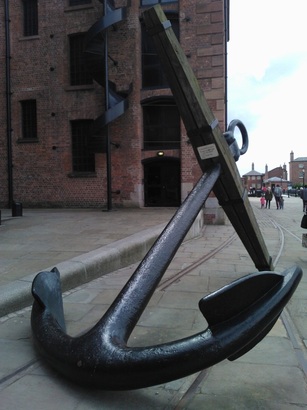She was laid down in Oct 1826 at HM Dockyard Plymouth as HMS Nile a 92 gun two deck second rate ship of the line having an overall length of 205 feet, depth of 54 feet, and weight of 4,375 tons.
She was armed with ten 8 inch guns and eighty two 30 pounders and was built entirely of wood, her construction costs being £86,197. Her sister ships were HMS London & HMS Rodney and her full complement of men was 850.
She was launched on 28 June 1839 in front of a large crowd of approximatly 50,000 people by Miss Warren the daughter of the Dockyard Admiral.
From 1839 to 1854 she was held in Reserve at Devonport and during this period a 500hp engine with a single screw was added, on the completion of this work she was finally commissioned.
In 1854 she was commanded by Commodore Henry Byam Martin, Western (Channel) squadron and sailed in May 1854 to the Gulf of Finland to join the Baltic Squadron. As the war with Russia progressed In May 1855 she led the squadron into Biorko Sound engaging the Russians on several occasions. At the end of hostilities in April 1856 she formed part of the Spithead Review to mark the end of the Crimean War.
On 17 June 1856 she sailed for Halifax, Nova Scotia to patrol the North American and West Indies stations. For some time she was the flagship of Rear Admiral Arthur Flagshawe and visited Halifax, Bermuda, San Domingo, Port Royal and Havana.
In May 1859 she was back in Britain and spent seven weeks in Greenock as a show ship open to visitors. On 3 July 1859 she arrived on the River Mersey for a similar visit.
On 24 August 1859 Nile steamed out of Cork harbour to join the Channel squadron at Spithead and exercised with the fleet the following month. On 15 October 1859 she sailed into the Atlantic for the West Indies but was caught in a hurricane in the North Atlantic suffering severe damage forcing a return to Cork for repairs, in December she was towed to Plymouth where the repairs were completed.
Nile become flagship of Rear-Admiral Alexander Milne sailing for Bermuda in June 1860 arriving in Halifax as flagship of the North American Squadron, later the same year the Prince Of Wales was entertained on board.
She was reported as being in Bermuda in February 1862 commanded by Captain Barnard with other vessels engaged in recovering the stores from the HMS Conqueror which had been wrecked on Rum Cay.
HMS Conqueror was 101-gun man of war built in Devon in 1855. Like HMS Nile she served in the Crimean war but was lost on Sumner Point Reef, Rum Cay, on 13 December 1861. She was 20 nm out in estimating her position and after making her landfall cut the South East point of Rum Cay too fine and went hard on the reef. The crew unloaded everything they could salvage and made a camp on the island where they were marooned until rescued once news of the disaster became known.
April 1864 found her back in Britain and placed in Reserve at Devonport. In 1876 the Admiralty carried out many renovations to the ship and fitted a new foremast (the old main mast of HMS Satellite), main mast, mizzen mast and bowsprit from HMS Jason. In July 1876 she was renamed HMS Conway and moved to Liverpool where she became a school replacing an earlier vessel of the same name.
Relocated due to bombing during the war she was being moved in 1953 when she ran aground on rocks beneath the Menai suspension bridge in North Wales breaking her back as the tide fell, later she burned to the waterline whilst being dismantled. Apparently her remains can still be seen at low tide.

 RSS Feed
RSS Feed
